#NewDriverTips
Explore tagged Tumblr posts
Text
Driving with a Learner’s Permit in Canada: What’s Allowed

Content: Learner’s permits, like Ontario’s G1 or Alberta’s Class 7, come with restrictions. Learners must drive with a fully licensed driver, typically with at least four years of experience. Driving is often prohibited at night, on highways, or after consuming any alcohol.
Breaking these rules can delay your licensing progress and result in fines or penalties.
Read your province’s learner regulations carefully to avoid unnecessary mistakes.
licenseprep.ca offers learning tools and test simulations tailored for beginner drivers.
3 notes
·
View notes
Text
Understanding Canada’s Graduated Licensing System (GLS)

Canada’s Graduated Licensing System (GLS) is designed to give new drivers the time and experience they need to become safe on the road. While each province has its specific version of the GLS, the general principle remains the same: new drivers must go through a series of steps before earning a full, unrestricted driver’s license.
The system typically begins with a learner’s permit (often called G1 or Class 7, depending on the province). To earn this permit, you must pass a written test, which covers the rules of the road, road signs, and various driving laws.
After obtaining the learner’s permit, new drivers are expected to gain experience behind the wheel while adhering to strict restrictions, such as driving with a fully licensed driver and avoiding high-speed roads.
Tip: Learn the rules with licenseprep.ca. Whether it’s road signs, local laws, or traffic regulations, the platform provides tailored resources to help you understand the rules of the road better and pass your tests successfully.
Next, drivers move on to the intermediate phase, where they receive a provisional license (often called G2 or Class 5). This license comes with fewer restrictions and allows for solo driving, but drivers are still limited in certain ways, like a ban on driving late at night or with young passengers.
The final step in the GLS is obtaining your full driver’s license. After holding the intermediate license for a set period (usually around 12-24 months), drivers can take a road test to demonstrate their skills and gain full driving privileges.
The GLS system helps reduce accidents and fatalities by ensuring that new drivers get the practice and experience needed before facing the full responsibility of driving independently.
4 notes
·
View notes
Text
Winter Driving Tips for New Drivers in Canada
Introduction: Winter in Canada brings snow, ice, and visibility challenges—especially tricky for new drivers. If you're just getting your license or preparing for your road test, understanding winter road safety is essential.

Content: ✅ Know How Winter Affects Roads
Snow reduces tire traction.
Ice can form black ice patches that are hard to see.
Visibility often drops in snowy or foggy conditions.
✅ Prepare Your Vehicle
Use winter tires—they're mandatory in some provinces like Quebec.
Check your battery, wipers, and antifreeze levels.
Keep an emergency kit in your car (includes blanket, flashlight, and food).
✅ Adjust Your Driving Techniques
Slow Down: Always drive below the speed limit when conditions are poor.
Brake Gently: Avoid skidding by pressing brakes slowly and steadily.
Increase Following Distance: Allow extra space between you and the vehicle ahead.
Use Headlights: Even during the day, turn them on to increase visibility.
✅ Practice Makes Perfect
Get comfortable driving in controlled environments like parking lots.
Learn how your car handles skids or emergency braking.
If you're practicing for the G2 or G test, request lessons specifically focused on winter driving.
Image Suggestions:
A car with snow tires driving on a snowy road
A dashboard with fogged windows and heater on
A learner driver with instructor during snowy conditions
Interactive checking drills on http://licenseprep.ca
Trending Tags: #WinterDriving #CanadianWinters #DriveSafeCanada #NewDriverTips #WinterRoadTest #licenseprep
4 notes
·
View notes
Video
tumblr
https://www.soovy.club/blog/how-to-care-for-your-car-new-driver-maintenance-tips
7 Tips for New Drivers: How to Care for Your Car Looking for car maintenance tips? As a new car owner, it's important to know how to take care of your vehicle. Our guide offers expert advice on everything from oil changes to tire rotations. Keep your car running smoothly and safely on the road with our essential tips for new drivers.
#Car maintenance tips for new drivers#How to care for your car as a new driver#Essential car care tips for new owners#Expert advice on car maintenance for beginners#Tips for keeping your car running smoothly#NewDriverTips#CarMaintenance101#VehicleCareTips#CarOwnershipAdvice#EssentialCarTips#NewCarOwnerGuide#RoadSafetyTips#lifestyle#cars#new driver#new drivers
5 notes
·
View notes
Photo

@toptechghana: 🚘🚶🚴🚗💯 Remember, You share the road with others! #Drivedefensively #QualityInEveryMove #Accra #Ghana #RYSENSHYNE #newdrivertip #Ghanaian https://t.co/mcLp8nQH18
0 notes
Text
How to Prepare for the Canadian Hazard Perception Test

If you're working toward your full driver’s license in Canada or applying for a commercial license, you may be required to take the Hazard Perception Test (HPT). This test evaluates your ability to spot and react to potential dangers while driving—a crucial skill for road safety.
Here’s how you can prepare effectively and improve your chances of passing on the first try.
What Is the Hazard Perception Test?
The HPT is a video-based test that simulates real-world driving situations. It measures your ability to:
Recognize developing hazards
Respond appropriately and in time
Prioritize risks under pressure
You’ll watch short clips from a driver’s point of view and will need to click when you notice a potential hazard forming—such as a pedestrian crossing or a car merging unexpectedly.
Who Needs to Take It?
Some provincial licensing systems, like Ontario’s commercial or graduated licensing programs, include an HPT component.
New and returning drivers, especially those exchanging a foreign license, may be required to pass this test based on provincial rules.
Top Preparation Tips
1. Understand What Counts as a Hazard
Not every movement on the road is a threat. Learn the difference between a developing hazard and routine motion. Hazards typically involve:
Pedestrians stepping off the curb
Cyclists swerving
Vehicles braking suddenly or turning without signal
2. Practice with Mock Tests
Use platforms like licenseprep.ca to practice simulated hazard perception videos. These interactive tools mimic the real test format and help train your eye for potential threats.
3. Focus on Timing
Early detection matters. Don’t click too soon or too late. Practice identifying when a hazard begins to form—not when it’s obvious.
4. Stay Calm Under Pressure
The test is designed to be fast-paced. The more familiar you are with driving environments through practice tests, the more naturally you’ll respond.
What to Expect on Test Day
The HPT is typically done on a computer at a test centre.
You’ll be given instructions and a few sample questions before the real test begins.
There’s usually no "pass/fail" sound per question—you’ll receive your overall results at the end.
Use the Right Tools to Prepare
Success starts with the right prep tools. At licenseprep.ca, you’ll find interactive hazard perception tests, provincial driving laws, and full exam preparation resources. It’s the smart way to prepare with confidence.
Final Thoughts
The Hazard Perception Test is more than just a license requirement—it’s a key part of becoming a safe and responsible driver in Canada. Prepare thoroughly, practice often, and go into your test feeling confident and alert.
#HazardPerceptionTest#CanadianDrivingTest#DrivingLicenseCanada#NewDriverTips#licenseprep#RoadSafetyCanada#GTestPrep
1 note
·
View note
Text
How Insurance Rates Change After Getting Your First Canadian Driver’s License
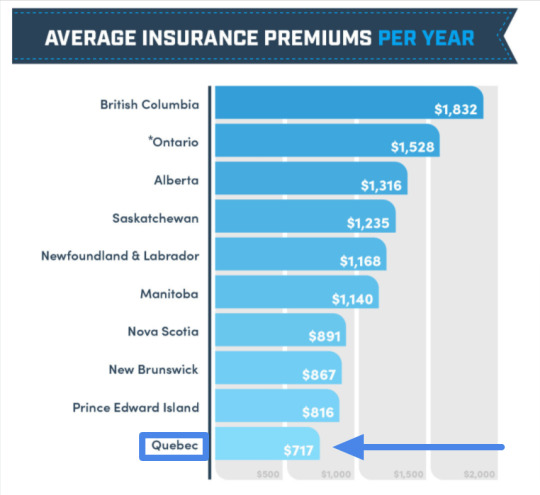
Getting your first driver’s license in Canada is an exciting milestone—but it also comes with a new responsibility: auto insurance. Whether you’ve just passed your G1 or G2, you might be wondering: how much will insurance cost, and how will your rates change over time?
Here’s a guide to understanding how insurance rates work for new drivers in Canada, and how you can keep your premiums low as a beginner.
Why Are Insurance Rates Higher for New Drivers?
New drivers are considered higher risk because they have little to no driving history. Insurance companies typically base premiums on:
Age and experience
Driving history
Type of vehicle
Where you live
Frequency of driving
Since new drivers haven’t yet proven themselves on the road, they usually face higher insurance rates—especially if they are under 25.
What Happens Right After You Get Your License?
Once you get your G1 or G2, you must either:
Be added to a parent or guardian’s policy, or
Purchase your own insurance policy if you own a vehicle.
G1 drivers often don’t need full coverage if they’re supervised while driving, but G2 drivers who can drive alone will need full liability coverage at minimum.
When Do Rates Start Going Down?
Your insurance rates can start to decrease after:
1–2 years of safe driving
Completing an accredited driver’s education course
Turning 25 (age matters in the insurance world)
No tickets or accidents on your record
You can speed up this timeline by preparing well and passing your tests the first time using resources like licenseprep.ca, which helps you understand road rules and safe driving practices.
What Can You Do to Lower Your Insurance?
Take an approved driver’s education course
Avoid accidents and traffic violations
Drive a car that’s cheaper to insure
Bundle your insurance if possible
Ask about student or good-driver discounts
Many insurers offer incentives for clean records and completed training—so it pays to learn smart from the start with tools like licenseprep.ca.
Final Thoughts
Your first car insurance quote might be a bit of a shock, but it gets better. With time, safe driving, and the right knowledge, you’ll see your rates drop steadily. Think of it as part of the journey—and a reason to build good habits from day one.
#FirstTimeDriverCanada#CanadianCarInsurance#NewDriverTips#InsuranceForBeginners#LicensePrep#SaveOnInsurance#G2DrivingCanada
0 notes
Text
Understanding Canada’s New Distracted Driving Laws and Their Impact on New Drivers

Distracted driving is one of the leading causes of road accidents in Canada, and the government is taking it more seriously than ever. With new laws and tougher penalties in place, new drivers need to be especially aware of what counts as distracted driving—and how it can affect their ability to get or keep a license.
Here’s what you need to know about Canada’s updated distracted driving laws and how to stay safe (and legal) on the road.
What Is Distracted Driving?
Distracted driving includes any activity that diverts attention from driving, such as:
Using a mobile phone (even at a red light)
Eating or drinking
Adjusting your GPS or radio
Talking to passengers
Looking away from the road for too long
But the most serious—and most targeted—form is texting or using handheld electronic devices while driving.
What Do the New Laws Say?
Laws vary slightly by province, but here are some updated common elements across most of Canada:
Use of handheld devices is prohibited at all times while driving, even when stopped at a light.
First-time offenses can result in fines up to $1,000, 3–5 demerit points, and in some provinces, license suspension.
G1 and G2 (learner and novice) drivers face stricter penalties, including longer suspensions and delayed graduation to the next license level.
How This Impacts New Drivers
For new drivers, even one distracted driving ticket can have serious consequences:
You may lose your G1 or G2 license temporarily.
Your progress through the graduated licensing system can be delayed.
Your car insurance rates may increase.
You could be required to restart the licensing process in some cases.
Learn the Rules with licenseprep.ca
Avoid surprises on your test and on the road. Study the rules around distracted driving and more with easy-to-follow guides and practice tests at licenseprep.ca.
Final Advice
Distracted driving is not just about texting—it’s anything that takes your focus off the road. For new drivers especially, staying fully alert and following the rules is essential for safety and license security. As the laws evolve, so should your driving habits.
#DistractedDrivingCanada#NewDriverTips#DrivingLawsCanada#GraduatedLicensing#SafeDriving#LicensePrep#CanadianRoadTest
0 notes
Text
Insurance Tips for New Drivers in Canada
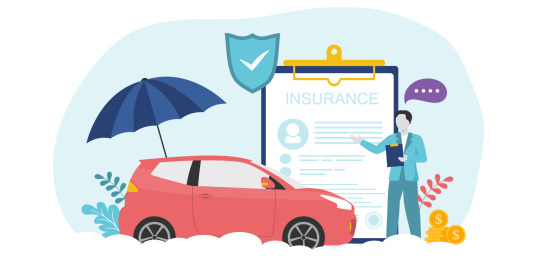
Getting your driver’s license in Canada is a major milestone, but one of the most important steps afterward is setting up car insurance—and it can be confusing for new drivers. Whether you’re a teenager, a newcomer to Canada, or someone getting behind the wheel for the first time, understanding how insurance works and how to keep your premiums affordable is key.
1. Understand Why Insurance is Mandatory
In Canada, auto insurance is legally required in every province and territory. At a minimum, you must carry liability coverage, which protects others in the event you cause an accident. Some provinces also include accident benefits and uninsured driver coverage in their mandatory plans. Driving without insurance can result in fines, license suspension, or even criminal charges.
2. New Drivers Usually Pay More—Here’s Why
As a new driver, you’re considered high-risk because you don’t have an established driving record. Insurance companies use data and risk assessment to calculate your rate, and without a history, they typically charge higher premiums. Age, location, type of vehicle, and even your postal code can affect your rate.
3. Get Added to a Parent or Spouse’s Policy (If Possible)
If you're a young driver, it can be more affordable to get listed as a secondary driver on a parent or guardian’s insurance policy. This way, you begin building a driving history without paying the full cost of an individual policy. Just be honest—if you’re the main driver of the car, don’t list someone else as the primary driver to reduce costs, as this is considered insurance fraud.
4. Choose the Right Car
The kind of vehicle you drive affects how much you’ll pay. High-performance cars, luxury vehicles, or models with high theft rates cost more to insure. As a new driver, it’s smart to start with a safe, reliable, and affordable vehicle that has a good safety rating and lower repair costs. Insurance companies love safe choices.
5. Take a Certified Driving Course
Some insurers offer discounts if you complete a government-approved driver education course. These courses teach defensive driving skills and help reduce your risk of collisions. Taking formal training can help you qualify for lower premiums and often shortens the waiting time between licensing stages.
6. Tip: Learn the Rules with licenseprep.ca
Driving safely starts with knowing the rules. Before you even get your license and think about insurance, use licenseprep.ca to prepare for your written and road tests. Studying with up-to-date practice materials and road sign quizzes ensures you’re well-informed before hitting the road—and insurers love well-prepared drivers.
7. Compare Quotes and Ask for Discounts
Don’t settle for the first quote you receive. Shop around and compare offers from different insurance providers. Many offer discounts for things like bundling with home insurance, being a student with good grades, installing winter tires, or even going paperless. Every little bit helps, especially when you're new to the system.
8. Final Word
Auto insurance doesn’t have to be overwhelming. By understanding how it works and taking steps to show you’re a responsible driver, you can reduce costs and stay protected. As your experience and driving record grow, so will your chances of securing lower rates—and greater peace of mind.
#CarInsuranceCanada#NewDriverTips#InsuranceForBeginners#DrivingInCanada#InsuranceDiscounts#G1ToG#DrivingTestCanada#LicensePrep#CanadaDrivingBlog#AffordableInsurance
0 notes
Text
Driving Near Emergency Scenes: What You Need to Know
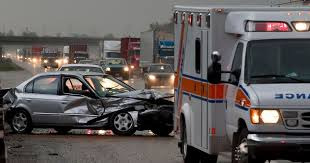
When approaching emergency scenes—whether it's a crash, roadside assistance, or first responders on duty—drivers must act with caution and responsibility. Failing to slow down or move over not only endangers lives but can also result in serious fines. New Canadian drivers must understand how to handle these situations safely and
1. The “Move Over” Law Across Canada, "Move Over" laws require drivers to slow down and, if safe, change lanes when
2. Slow Down Significantly Even if changing lanes isn't possible, you must reduce your speed well below the
3. Give Space, Stay Alert Keep a wide berth between your vehicle and
4. Don't Resist the urge to slow down excessively or stare at the incident. “Rubbernecking” causes traffic delays and accidents. Stay focused on the road ahead and keep moving smoothly once you pass.
5. Follow Officer If police
6. Avoid Distractions Silence your phone
7. Never Block Emergency Access Don
8. Prepare Through Education Emergency scenarios are unpredictable. Prepare yourself with the knowledge and confidence needed to act safely under pressure. Understanding legal obligations is just the beginning.
To build safe habits and pass your driving exam with confidence, visit licenseprep.ca for expert guidance and practice resources tailored to new
#MoveOverLaw #EmergencySceneSafety #NewDriverTips #SafeDrivingCanada #LicensePrep #FirstResponderSafety #RoadsideAwareness #Driving
0 notes
Text
Understanding Four-Way Stops: Right-of-Way and Courtesy
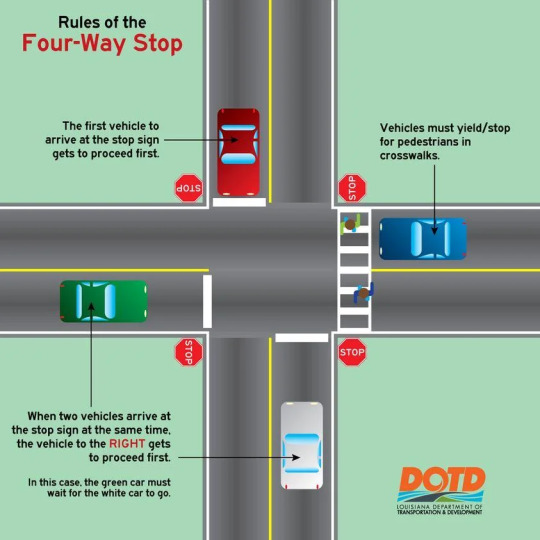
Four-way stop intersections can be confusing for new drivers, especially when multiple vehicles arrive at the same time. Knowing who has the right-of-way and how to navigate these stops correctly is critical for preventing accidents and ensuring smooth traffic flow. Mastering this skill is also a key component of your Canadian driving test.
1. What Is A four-way stop is
2. First Come, First Go The general rule is simple: the
3. Arriving at the Same Time When two vehicles arrive at the intersection simultaneously, the driver on the
4 Always use your turn signals to indicate your intentions. This helps other drivers understand what you're doing and avoids hesitation or miscommunication. A friendly wave can
5. Make Full Stops Every Time Rolling stops are
6. Watch for Pedestrians and Cyclists Pedestrians have the right-of
7. Be Fog
8. Practice Builds Confidence Four-way stops are common in residential areas and rural intersections. The more you practice, the more second-nature these rules will become. Being courteous and predictable
Ready to sharpen your skills and ace your driving knowledge test? Visit licenseprep.ca for trusted prep tools, guides, and practice exams.
#FourWayStop #RightOfWay #NewDriverTips #SafeDrivingCanada #LicensePrep
0 notes
Text
Navigating Intersections: A Guide to Traffic Signals and Right-of-Way
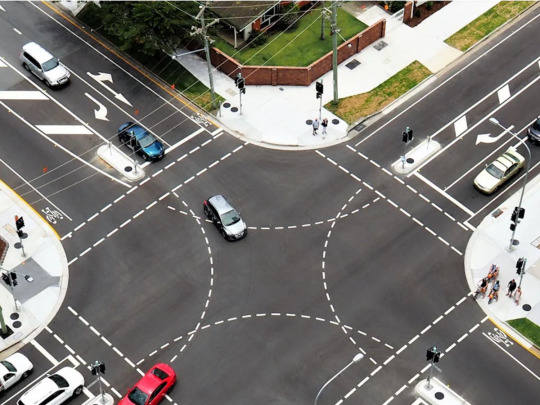
Intersections are where a significant number of collisions occur, making them one of the most important areas for new drivers to master. Understanding traffic signals and right-of-way rules can help you navigate these often chaotic spaces with confidence and safety. In this guide, we'll break down everything you need to know to handle intersections like a pro.
1. Understanding Traffic The most
2. What to Do at a Red Light At a red light, you must come to
3. Yellow Lights: Slow Down, When
4. Green Lights: Proceed A green light
5. Right-of-Way Rules Knowing when you have the right of way can prevent confusion and accidents
6. Roundabouts and Yielding In some intersections, you may encounter roundabouts. These are designed to keep traffic moving efficiently, but they require
7. Turning at Intersections When making turns at intersections, always signal well in advance. In addition to signaling, ensure you're in the
8. Practice Makes Perfect Intersections can be tricky, especially during rush hour or in complex city layouts. To become comfortable
For more detailed driving tips and to test your knowledge with practice exams, visit licenseprep.ca.
#IntersectionSafety #RightOfWayRules #TrafficSignals #NewDriverTips #DrivingCanada #SafeDrivingPractices #LicensePrep #RoadSafetyCanada #DrivingConfidence
0 notes
Text
Navigating Roundabouts: Rules and Confidence for New Drivers
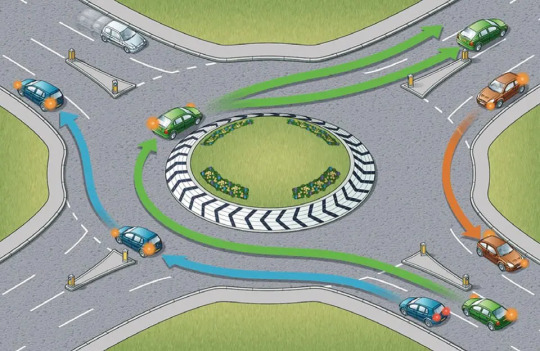
For many new drivers in Canada, roundabouts can feel intimidating. Unlike traditional intersections with traffic lights or stop signs, roundabouts require constant movement, split-second decisions, and a firm grasp of right-of-way rules. But once mastered, they offer smoother traffic flow and enhanced safety—making them worth the learning curve.
Roundabouts are designed to reduce conflict points thatthat often leads to accidents. Since all traffic moves in one direction around a central island, there are fewer chances for head-on or T-bone collisions. This design also forces drivers to slow down, minimizing the impact of any potential crashes.
The most important rule in a roundabout is yielding to traffic already inside it. As you approach, look to your left and wait for a safe gap before entering. Don't rush or force your way in—doing so can cause confusion or accidents. If there is a pedestrian crosswalk at the entrance, you must stop for anyone crossing.
Use your signals clearly. If you're turning right (taking the first exit), signal right before entering. For going straight (second exit), no signal is needed upon entry but signal right as you pass the first exit. If you're turning left or making a full circle, signal left entering, and switch to right before exiting. This communicates your intentions to others, easing navigation for everyone.
Lane choice is critical in multi-lane roundabouts. Generally, the right lane is for right turns and straight, while the left is for left turns or U-turns. Look for road signs and pavement markings before entering. Never switch lanes inside the roundabout—if you're in the wrong lane, take a different exit and reroute.
Slow, steady, and alert is the mindset for roundabouts. Avoid sudden stops, watch for cyclists and pedestrians, and never stop within the roundabout unless necessary. New drivers often hesitate or overthink, but with practice, confidence builds quickly.
If you're still unsure, practice roundabouts in low-traffic areas with a supervising driver. The more you navigate them, the more intuitive they become. Roundabouts are increasingly common across Canadian cities and suburbs, so building this skill is essential for long-term driving success.
Ready to tackle roundabouts and more complex driving scenarios? Visit licenseprep.ca for hands-on resources, mock tests, and expert guidance
#Roundabouts #NewDriverTips #DriveWithConfidence #RoadRulesCanada #licenseprep #CanadianRoads #SmartDriving
0 notes